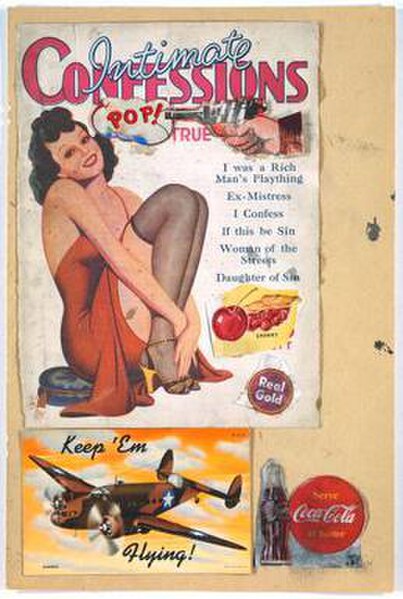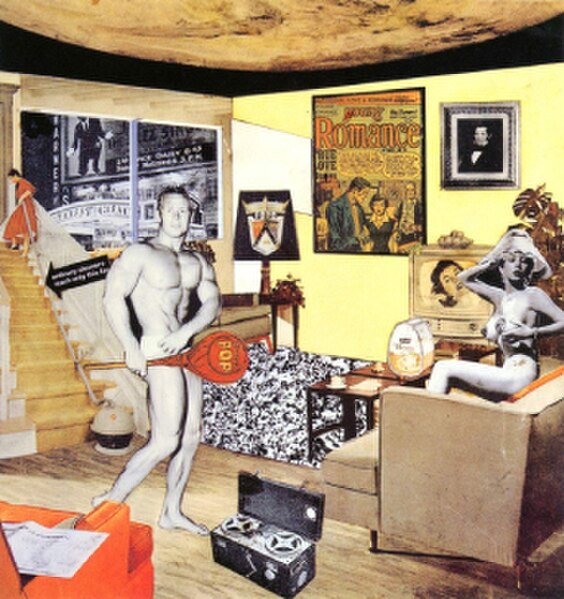Andy Warhol was an American visual artist, film director and producer. A leading figure in the pop art movement, Warhol is considered one of the most important American artists of the second half of the 20th century. His works explore the relationship between artistic expression, advertising, and celebrity culture that flourished by the 1960s, and span a variety of media, including painting, silkscreening, photography, film, and sculpture. Some of his best-known works include the silkscreen paintings Campbell's Soup Cans (1962) and Marilyn Diptych (1962), the experimental films Empire (1964) and Chelsea Girls (1966), and the multimedia events known as the Exploding Plastic Inevitable (1966–67).
Warhol in 1980
Warhol's childhood home. 3252 Dawson Street, South Oakland neighborhood of Pittsburgh, Pennsylvania
An infant Warhol (right) with his mother, Julia, and his brother, John (left); dated c. 1930.
Warhol (left) and Tennessee Williams (right) talking on the SS France, 1967.
Pop art is an art movement that emerged in the United Kingdom and the United States during the mid- to late-1950s. The movement presented a challenge to traditions of fine art by including imagery from popular and mass culture, such as advertising, comic books and mundane mass-produced objects. One of its aims is to use images of popular culture in art, emphasizing the banal or kitschy elements of any culture, most often through the use of irony. It is also associated with the artists' use of mechanical means of reproduction or rendering techniques. In pop art, material is sometimes visually removed from its known context, isolated, or combined with unrelated material.
Eduardo Paolozzi, I was a Rich Man's Plaything (1947). Part of his Bunk! series, this is considered the initial bearer of "pop art" and the first to display the word "pop".
Andy Warhol, Campbell's Tomato Juice Box, 1964. Synthetic polymer paint and silkscreen ink on wood, 10 inches × 19 inches × 9½ inches (25.4 × 48.3 × 24.1 cm), Museum of Modern Art, New York City
Charles Demuth, I Saw the Figure 5 in Gold 1928, collection of the Metropolitan Museum of Art, New York City
Richard Hamilton's collage Just what is it that makes today's homes so different, so appealing? (1956) is one of the earliest works to be considered "pop art".








